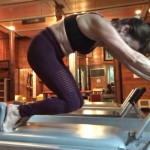October 3, 2018
A Perspective on the Knee Stretch Series: Knees Off
By Clare Dunphy
Alright, I am fairly certain we can all agree that Knees Off is an exercise that’s difficult to both do and to teach and one that most people love to hate. Why? Because it’s strenuous, easy as heck to cheat on, and (in my opinion) often misunderstood. That said, we shouldn’t avoid it just because it’s hard. The Knee Stretch Series as a whole is a wonderful study of how to hold the body still while the legs are moving and Knees Off in particular carries with it an even greater challenge due to the fact that the body weight is lifted up. Let’s dig in and take a closer look.
We’ll start by putting the exercise in context of the order. Knees Off is part of the Knee Stretch Series and is one of the “heart and soul” exercises in the system. It comes toward end of the reformer order, just before Running. The “series” is made up of three exercises: Round, Flat or Arched, and Knees Off. At this stage of the workout, the body has been taken through several positions, in varying relationships to gravity and it’s the last major effort called for before we cool down.
The most important part of Knees Off is finding and maintaining a connection with the 2-way stretch in this very challenging position. If you’re new to this concept, it’s a powerful, yet simple way to feel where your legs and arms are moving from and connecting with that feeling throughout any movement. The arms reaching from the back ribs and the legs reaching in opposition from the lower back. If you can keep your attention and focus on that connection, this exercise is much easier.
Let’s analyze and look at the position.
The starting position is the same as the Knee Stretches – Round Back. The hips are close to the heels, about 8 or so inches, the spine is round; the tail under and the eyes are looking into the body. The arm angle from the shoulder ideally stays the same throughout the entire exercise without the head or shoulders moving forward.
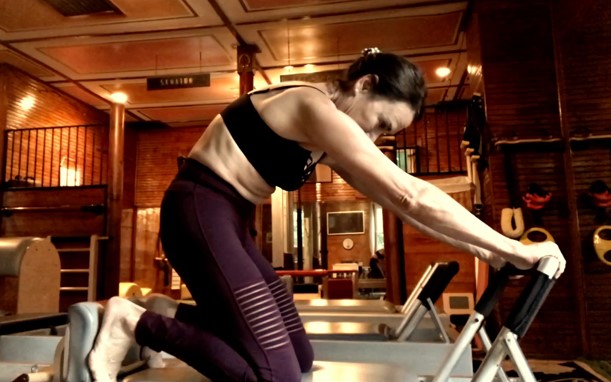
When the knees lift off to the height of the shoulder blocks, the spine doesn’t change-only the knees lift off. That’s the hard part….having fun yet???
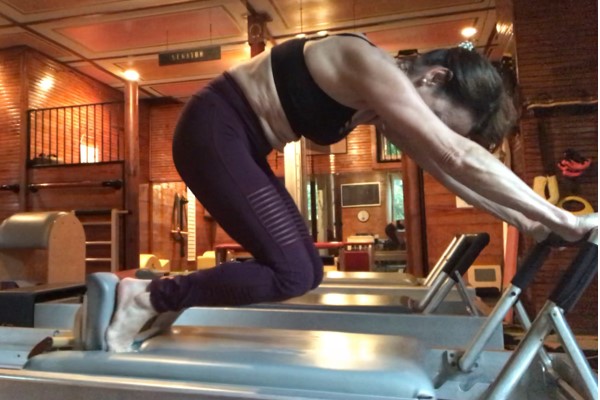
When the legs extend out, the spine and arm position remain the same and the knees remain at the same height. Right now, you should be in the upside down HUNDRED. See it?
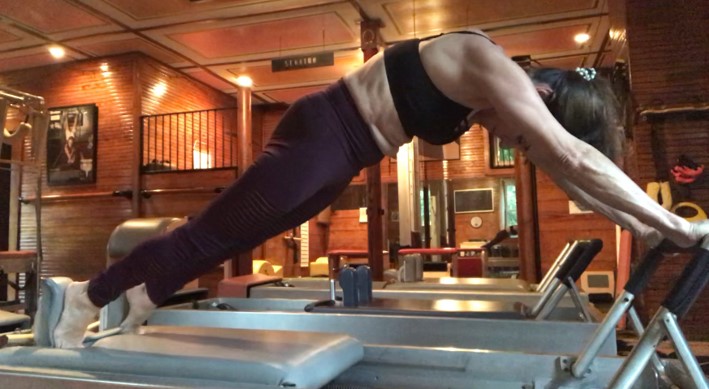
When the knees pull in, the focus should be on the tail coming under as the knees pull in.
Nothing.
Else.
Changes.


Let’s talk about the rhythm and dynamics. The carriage goes out long and easy then comes in strong. The accent is when the carriage is coming in. It’s a powerhouse exercise and the dynamics really DO make a difference.
https://www.youtube.com/watch?v=Ydx8g_U0D9U&feature=youtu.be
Common errors? There are so many ways the body tries to compensate because this exercise reveals any weakness; it surely shows the truth. Here are a few biggies:
- Shifting weight forward into the arms
- Bending the elbows
- Lifting the hips
- Arching the back
Teaching Tips
- Start by just lifting the knees off and holding the position without moving the legs.
- Try standing in a high heeled Elephant and lowering into the starting position.
- Encourage them to feel the connection of their arms pushing the footbar away and their ribs pulling up into their back in opposition.
- Simultaneously lift the knees while pressing out on the first repetition.
- Stop when they lose the correct body position.
Variations
Once you develop the strength and coordination to hold the position, we can practice the one- legged variations.
- Bring one foot to the front of the carriage in a split stance and keep it there during the exercise.
- Press the carriage out while the other knee comes in, then switch and finally kick toward the head.
https://www.youtube.com/watch?v=yRP1u4wyIic&feature=youtu.be
I hope this article was informative, thanks for reading!
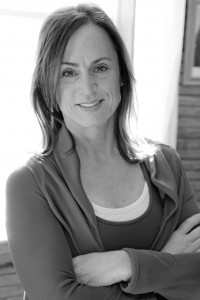 Clare Dunphy Hemani is the founder of Progressive Bodyworks, based in Newburyport, Massachusetts. Her roots in the field of human movement began at Northeastern University where she earned a BS in Physical Education in 1985, and holds certifications from PMA, ACE, and Romana Kryzanowska (now known as The New York Pilates Studio Teacher Training Program). In 1995, Clare began her Pilates studies under Romana Kryzanowska (first generation Master Teacher) and has since studied with several other teachers. Clare is a presenter on www.Pilatesology.com and www.PilatesAnytime.com . Clare hosts two free video channels on Vimeo.com for students and teachers interested in supplemental learning to keep the work vibrant in their practice. As co-author of the Peak Pilates Comprehensive Education Program, she mentored scores of teachers and teacher trainers between 2001-2013. Clare’s studio is a unique space where students and teachers around the world come to hone their technique and study the art of teaching. Committed to preserving the authenticity and tradition of Pilates, her approach is refreshing, energetic and supportive. Clare is excited to bring her talents her latest project www.PilatesAvatar.com , an audio program designed for students, teachers, and studios. Clare’s gift is her willingness to share knowledge generously and her ability to explain concepts in simple, clear ways. Her mission is to support the potential in all students/teachers and to keep the spirit of Joe and Romana alive in her work. Follow Clare at www.progressivebodyworksinc.
Clare Dunphy Hemani is the founder of Progressive Bodyworks, based in Newburyport, Massachusetts. Her roots in the field of human movement began at Northeastern University where she earned a BS in Physical Education in 1985, and holds certifications from PMA, ACE, and Romana Kryzanowska (now known as The New York Pilates Studio Teacher Training Program). In 1995, Clare began her Pilates studies under Romana Kryzanowska (first generation Master Teacher) and has since studied with several other teachers. Clare is a presenter on www.Pilatesology.com and www.PilatesAnytime.com . Clare hosts two free video channels on Vimeo.com for students and teachers interested in supplemental learning to keep the work vibrant in their practice. As co-author of the Peak Pilates Comprehensive Education Program, she mentored scores of teachers and teacher trainers between 2001-2013. Clare’s studio is a unique space where students and teachers around the world come to hone their technique and study the art of teaching. Committed to preserving the authenticity and tradition of Pilates, her approach is refreshing, energetic and supportive. Clare is excited to bring her talents her latest project www.PilatesAvatar.com , an audio program designed for students, teachers, and studios. Clare’s gift is her willingness to share knowledge generously and her ability to explain concepts in simple, clear ways. Her mission is to support the potential in all students/teachers and to keep the spirit of Joe and Romana alive in her work. Follow Clare at www.progressivebodyworksinc.

